Autor: Grace Pan
Fecha: 06 Abr 2025
Probablemente no tengas ni idea de Marimekko, pero si te enseño este estampado, ¿puedo obtener una respuesta como ésta? - "¡Ah, sí! Lo he visto antes".
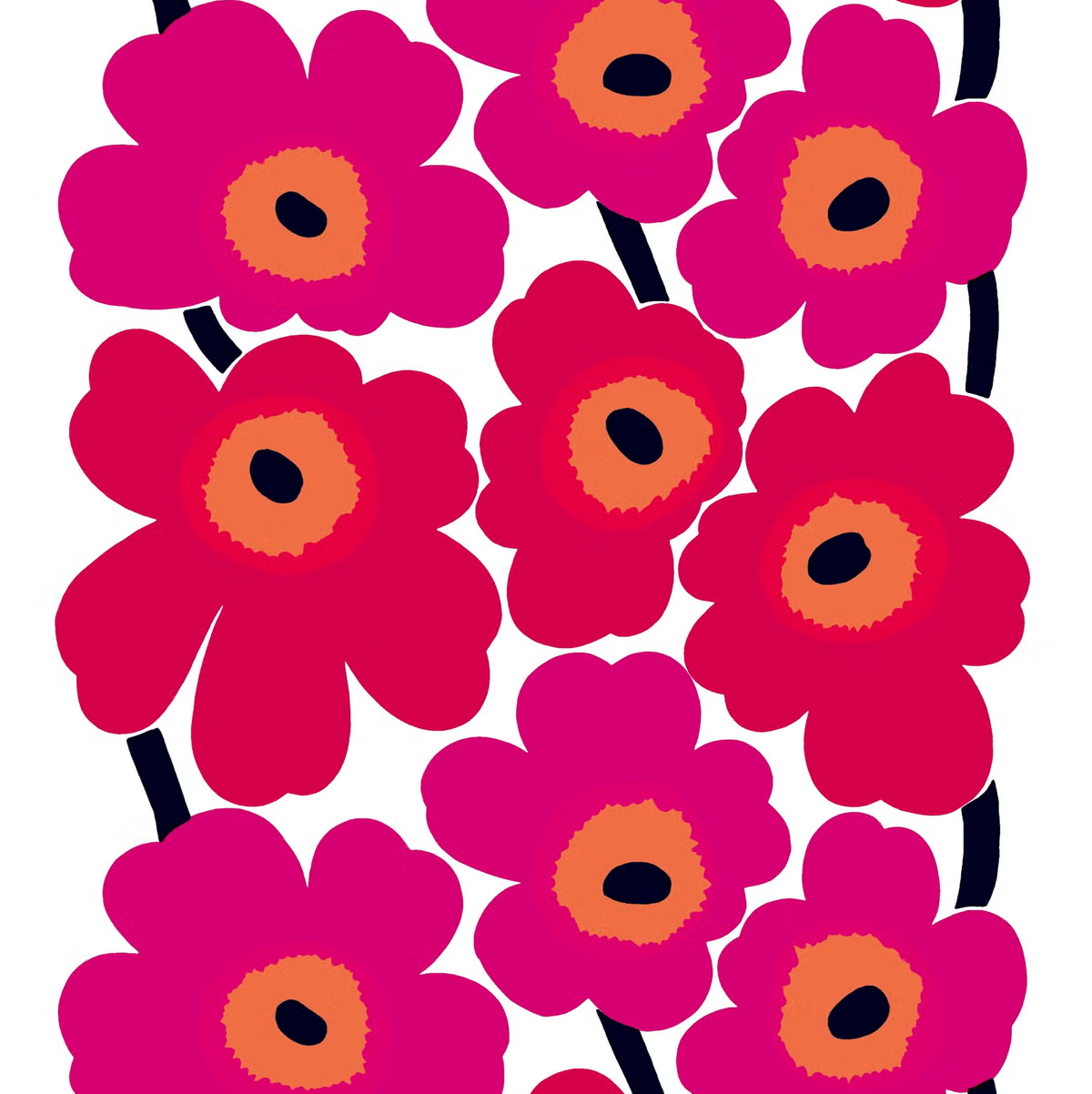
Marimekko, la casa de diseño finlandesa conocida por sus atrevidos estampados y vibrantes colores, es algo más que una marca de moda y textiles: es un fenómeno cultural que revolucionó el diseño escandinavo y aportó un nuevo nivel de expresión artística a la vida cotidiana. Con raíces profundamente arraigadas en el optimismo de posguerra, el ascenso de la marca a la fama internacional es una historia de liderazgo visionario, audaz experimentación artística y búsqueda incesante de la creatividad.
1. Fundadores de Marimekko
Marimekko fue fundada en 1951 por Armi Ratia y su marido Viljo Ratia en Helsinki (Finlandia). Armi Ratia es ampliamente reconocida como la visionaria detrás del espíritu de la marca. Poeta y pensadora creativa, Armi tenía un gran ojo para el diseño y un instinto para la estética que se convertiría en el corazón de la empresa. Mientras Viljo, un industrial, se encargaba de las operaciones comerciales, Armi se centraba en la dirección creativa, estableciendo Marimekko como una empresa que unía arte y funcionalidad de una forma totalmente nueva. Juntas, sus fuerzas complementarias formaron la columna vertebral de una marca destinada a trastornar la moda tradicional de posguerra.
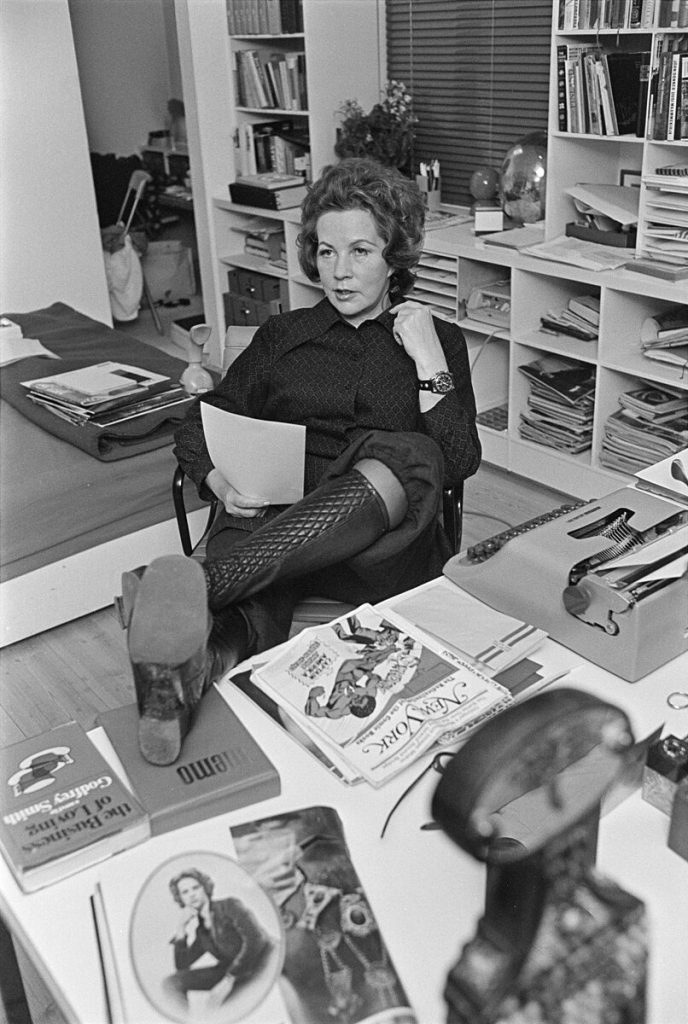
2. Nacimiento y punto de inflexión de la marca
La génesis de Marimekko se remonta al trabajo previo de Armi Ratia con una empresa de estampación textil llamada Printex, también propiedad de Viljo. Descontento con los estampados poco inspirados de la época, Armi invitó a jóvenes artistas finlandeses a crear diseños atrevidos y originales que desafiaran los patrones convencionales. Lo que empezó como una simple idea de "llevar el arte a los tejidos cotidianos" pronto se transformó en una declaración estética radical.
El punto de inflexión de la marca se produjo en 1951, durante un desfile de moda celebrado en unos grandes almacenes de Helsinki. En lugar de limitarse a vender telas estampadas, Armi decidió presentarlas como prendas de vestir, vestidos sencillos y fluidos que permitían lucir los atrevidos estampados. El éxito fue rotundo. Toda la colección se agotó en el acto. Ese momento marcó el nacimiento de la marca, que no se limitó a fabricar telas, sino que se convirtió en una marca de moda y estilo de vida.
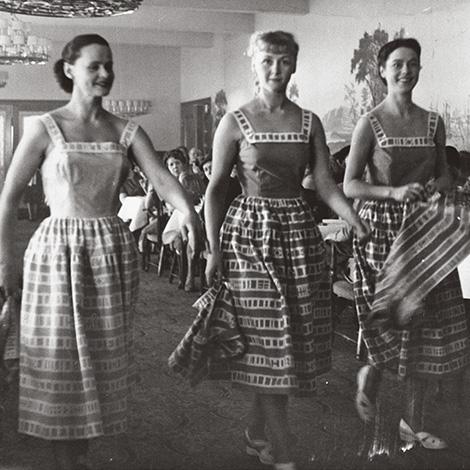
Otro momento crucial de su historia fue cuando Jacqueline Kennedy -entonces Primera Dama de Estados Unidos- fue fotografiada con varios vestidos Marimekko durante la campaña presidencial estadounidense de 1960. Su apoyo puso a la marca en el punto de mira internacional y consolidó su reputación como símbolo de moda moderna, sofisticada y liberada.
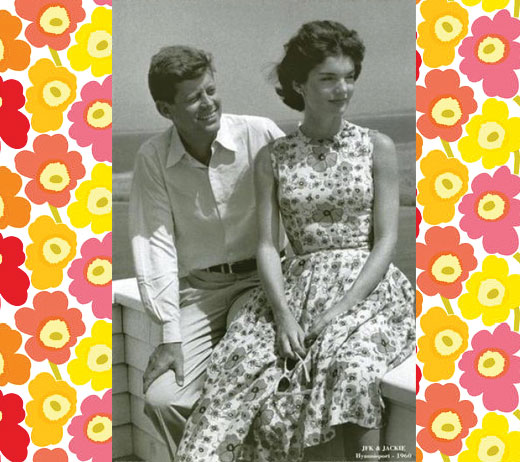
3. Hitos del desarrollo
Sigamos el ascenso de esta marca a lo largo de las décadas como una historia de continuidad artística y evolución adaptativa. Algunas fases clave del desarrollo son:
Años 50-60: La edad de oro artística
Bajo la dirección de Armi, Marimekko cultivó una lista de diseñadoras de talento como Maija Isola, Vuokko Nurmesniemi y Annika Rimala. Estas mujeres no eran sólo grabadoras, sino artistas que desafiaban las normas de género y celebraban la libertad a través de la moda. Su trabajo dio a la empresa su identidad única: colores llamativos, formas abstractas y una estética antimoda que priorizaba la individualidad sobre las tendencias.
Por ejemplo, Nurmesniemi diseñó la camisa Jokapoika de rayas rojas y blancas en 1956. Isola diseñó el icónico estampado Unikko (amapola) en 1964.
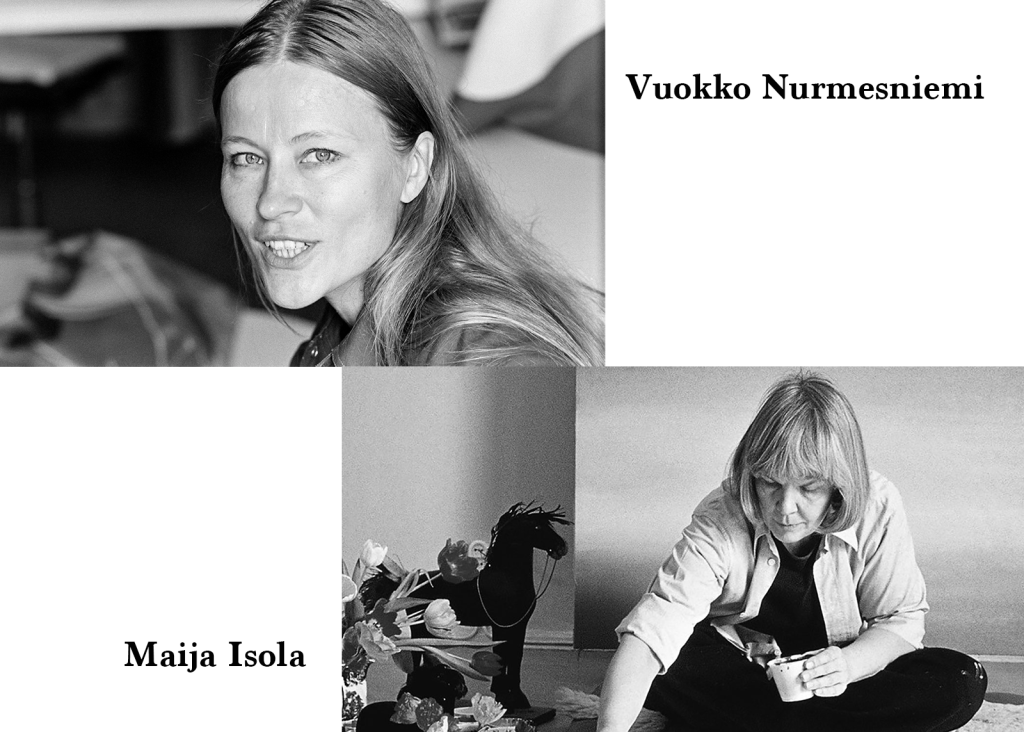
1970s: Expansión y retos
A medida que su popularidad se extendía por todo el mundo, la empresa se expandió a los textiles para el hogar, los accesorios e incluso los muebles. Sin embargo, tras la muerte de Armi Ratia en 1979, la empresa tuvo problemas de dirección y rentabilidad, entrando en una fase difícil durante la década de 1980.
Década de 1990-2000: Reactivación y crecimiento mundial
En 1991, la empresaria finlandesa Kirsti Paakkanen adquirió la empresa en dificultades y encabezó un importante resurgimiento. Su liderazgo restableció la estabilidad financiera de la marca y renovó su imagen para una nueva generación. Bajo su dirección, Marimekko entró en nuevos mercados internacionales y empezó a colaborar con minoristas internacionales como Crate & Barrel, Uniqlo y Target.
2010s-presente: Modernización y sostenibilidad
Marimekko adoptó las plataformas digitales, la sostenibilidad y las colaboraciones de diseño para seguir siendo relevante en el panorama de la moda moderna. La directora creativa Anna Teurnell (2014-2017) y más tarde Satu Maaranen siguieron construyendo sobre el legado de la marca, equilibrando la herencia con la innovación.
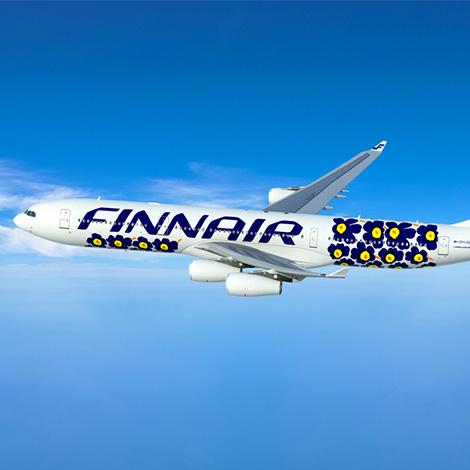
4. Diseños icónicos
En el corazón de la identidad de Marimekko se encuentra su uso distintivo de estampados y dibujos, muchos de los cuales han alcanzado el estatus de iconos:
Unikko (Amapola) - 1964
Diseñado por Maija Isola, Unikko es quizás el estampado más reconocible. Con sus grandes amapolas abstractas en tonos vivos, Unikko desafió la prohibición inicial de Armi Ratia de los estampados florales. La rebelde creación de Isola era tan poderosa y única que acabó convirtiéndose en el emblema de la marca.
Camisa Jokapoika - 1956
Diseñada por Vuokko Nurmesniemi, esta clásica camisa a rayas se convirtió en un básico de la moda finlandesa y simbolizó la sencillez y el atractivo unisex.
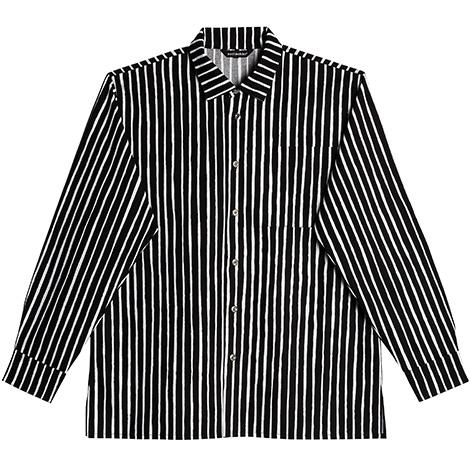
Tasaraido (raya uniforme) - 1968
Creado por Annika Rimala, este estampado se hizo famoso por su atractivo democrático y atemporal. Marcó el cambio de la marca hacia la ropa de diario y unisex que priorizaba la comodidad y la expresión personal.
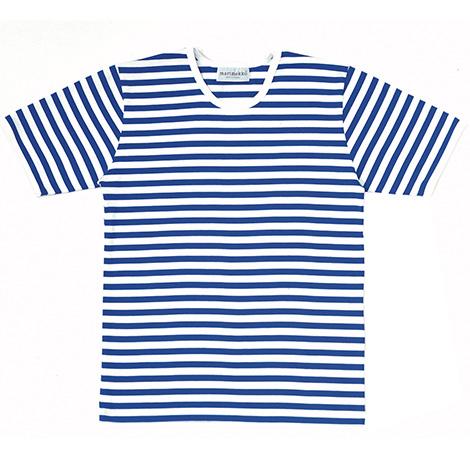
Estos diseños no son meras declaraciones de moda, sino que reflejan los valores fundamentales de Marimekko: individualidad, creatividad e igualdad. A diferencia de las casas de moda que marcan tendencia, el atractivo de Marimekko reside en su capacidad para permanecer atemporal a la vez que se reinventa constantemente.
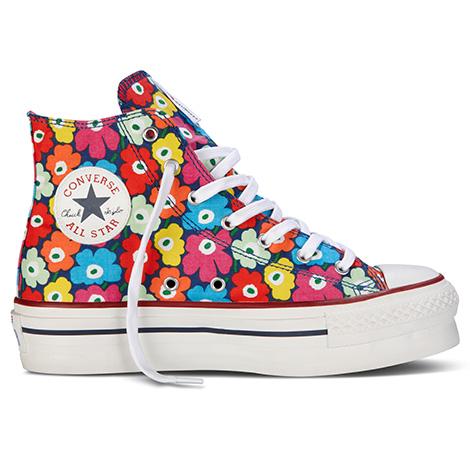
La primera de un total de seis colecciones de zapatillas Converse ♥ Marimekko llegará a las tiendas en la primavera de 2011. La colaboración en licencias con marcas internacionales ha formado parte del negocio de la empresa desde principios de los años setenta. Las colecciones de edición limitada lanzadas en asociación con nombres como Banana Republic, Target, Uniqlo, Clinique y Adidas, entre otros, también han aportado a Marimekko una gran visibilidad mundial a lo largo de los años.
La trayectoria de Marimekko, que pasó de ser una pequeña empresa textil de Helsinki a una marca de moda y diseño de fama internacional, es un testimonio de liderazgo visionario, colaboración artística e impacto cultural. Sus fundadores, en especial Armi Ratia, crearon un espacio donde el arte podía encontrarse con la vida cotidiana, donde un vestido podía ser un lienzo y un estampado podía ser una voz de libertad. Con sus raíces en el modernismo del siglo XX y los ojos puestos en el futuro sostenible, Marimekko sigue prosperando como símbolo de la autoexpresión alegre y el diseño audaz. (ver salsa)
Nuestra Gran fama en estampados celebra el legado de los pioneros del textil y la estampación más famosos del mundo. Esta serie se adentra en su historia empresarial, sus diseños atemporales y su perdurable influencia en la moda, el interiorismo y la estética cultural de todo el mundo].
Otros artículos de esta serie:
Arte que se puede llevar - Vera Neumann, una visionaria intemporal del color y el dibujo
Vera Neumann: la mujer que hacía bufandas a Lienzo de arte
Missoni: El legado de las prendas de punto italianas y su Icónico Patrones
Prendas de punto atemporales con Missoni Designs y su inferencia de marca
De la silla de montar a la seda: La evolución de Hermès hasta convertirse en un icono mundial del lujo
El arte de las bufandas Hermès: Un Breve Análisis Que Define Lujo
Liberty - La fascinante historia y sus iconos Tejido Imprime
Liberty Patterns - El arte y la versatilidad de su Atemporal Elegancia
Si desea obtener más información sobre el tejido, la artesanía, el proceso de fabricación o necesita más colaboración, envíenos un correo electrónico a la dirección de correo electrónico vip@docsunhomeandliving.como haga clic en la siguiente imagen para visitar nuestro sitio web oficial. También puede visitar Docsun Seda para orientarse sobre el atuendo diario.
2024.11-1024x1024.png)
